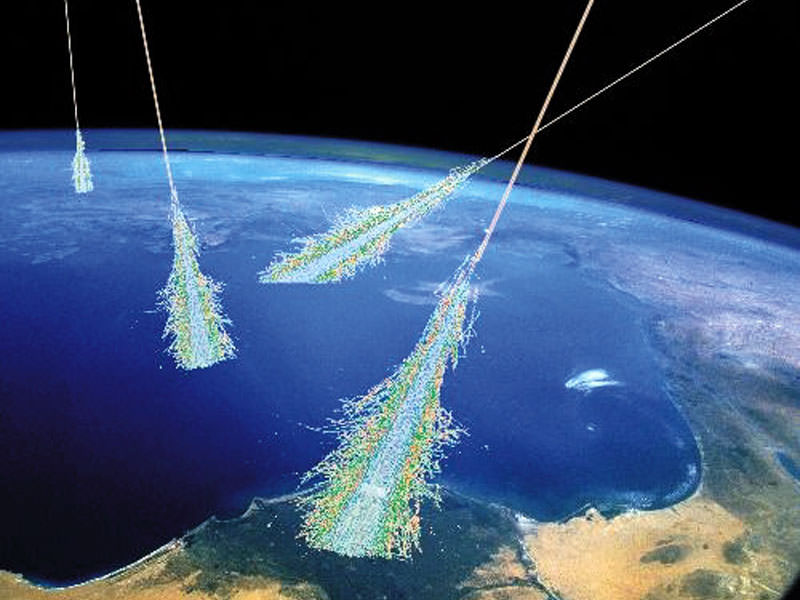World
Mysterious ‘Oh-My-God’ particle’s rival detected coming from beyond the Milky Way
By Jake Beardslee · November 24, 2023
In brief…
- Recently detected subatomic particle likely came from beyond the Milky Way
- Nicknamed "Amaterasu,” it struck Earth's atmosphere on May 27, 2021
- Origins of these powerful cosmic rays remain mysterious
- Amaterasu seems to come from an empty void, not a violent celestial event

A rare, ultra-high-energy subatomic particle has been detected that likely originated from outside our galaxy, rivaling the power of the famous 1991 “Oh-My-God” particle, researchers revealed Thursday. The newly spotted cosmic ray, playfully nicknamed “Amaterasu” after a Japanese sun goddess, struck Earth’s atmosphere on May 27, 2021 carrying an energy equivalent to “dropping a brick on your toe from waist height,” study coauthor John Matthews said to CNN.
Although Utah’s Telescope Array and other detectors have spent years studying these high-energy cosmic particles that continually reach Earth, their puzzling origins stay a mystery. Previously assumed to come from the cosmos’s most fierce areas such as black holes, the biggest particles like Amaterasu surprisingly seem to originate from voids - hollow spaces like the “Local Void” next to our galaxy where no violent celestial occurrences have happened.
“If you take the two highest-energy events - the one that we just found, the ‘Oh-My-God’ particle - those don’t even seem to point to anything,” said Matthews. “It should be something relatively close. Astronomers with visible telescopes can’t see anything really big and really violent.”
While the atmosphere protects us, space radiation threatens astronauts. An expansion underway to Telescope Array’s current 507 detectors may reveal insights when complete. Amaterasu struck 23 at once, allowing calculation of its record-rivaling energy.